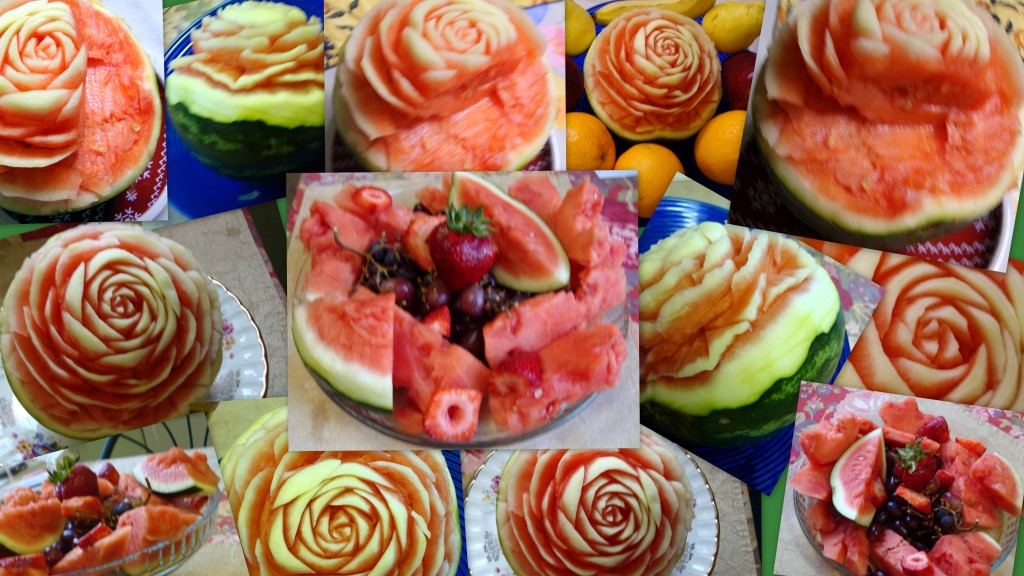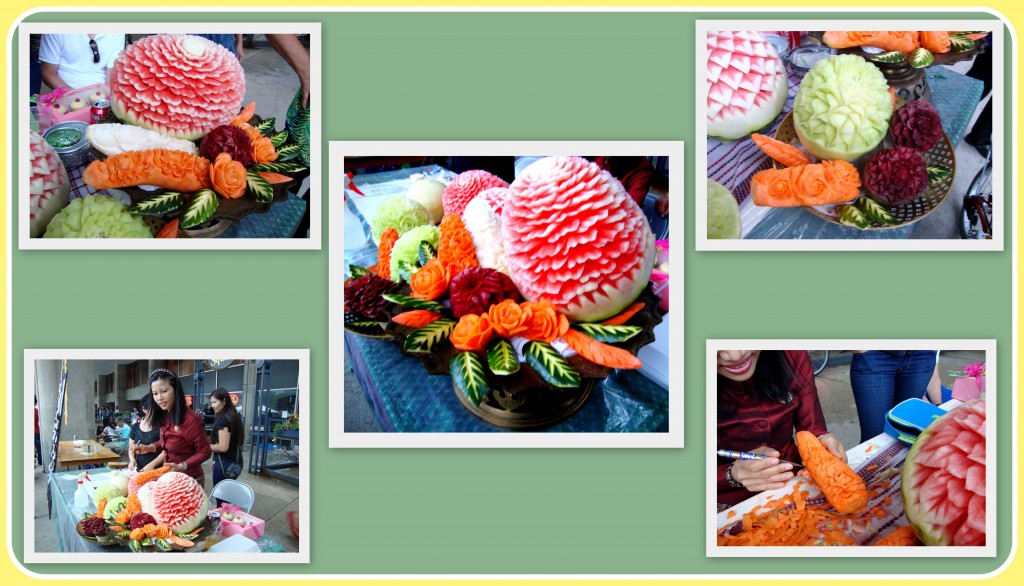
We can only be said to be alive in those moments when our hearts are conscious of our treasures. ~Thornton Wilder
As you can see from the “Watermelon Surprise” collage, this was a beautiful gift. I was overjoyed. I love eating watermelon during the Summer time and although it’s still Spring, a signal went off in my brain that Summer had indeed arrived. I was struck by this work of art before me and rushed to capture its beauty. I photographed it by itself and with other fruit and in all the different ways that I could think of. You can also see from the collage that it was cut, served, eaten, and enjoyed. There is a history behind this art and since my friend learned this art in Thailand, I wanted to know the background behind it.
The story of fruit and vegetable carving begins about 700 years ago in Sukothai, the capital of the Tai people, in what is now the north of central Thailand. Sukothai was the capital of the region from 1240 – 1350. In preparation for one of their major festivals, Loi Kratong, one of the King’s servants, called Nang Noppamart, tried to think how she could make her Kratong more beautiful, in order to please the king. She took a flower and used it as a pattern to carve from. She then carved a bird and set it with its head pointing towards the flower. Loi Kratong is still celebrated today and Sukothai is one of the best places in Thailand to experience it.
To learn fruit carving in the place where it all started is quite amazing. However, apart from the watermelon itself and how beautifully it was carved, it represented much more to me. I was struck by the thoughtfulness and generosity of this person. It takes time and a very kind and loving heart to give a gift like this. This was no ordinary watermelon.
I was overcome with gratitude in my own heart to be the recipient of this and grateful for the other person. Sometimes we meet mean and unkind people on our journey through life and become cynical and jaded. This act of kindness touched my heart and I was reminded of what Mother Teresa said: “We can’t all do great things, but we can do small things with great love.”
This was no small thing to this Late Bloomer’s heart. As I get older, I realize that the real “treasures” in my life are acts, words, and deeds of kindness shown to me. Enjoy all your watermelons and another tidbit about this wonderful art below.
Fruit and vegetable carving is also mentioned in the poetry of King Rama 2 who reigned from 1808-1824. He wrote about the beauty of Thai desserts and fruit and vegetable carving.
After the revolution in 1932 fruit and vegetable carving became less popular. Those worried about the art disappearing set up a course to train people to teach the art to everyone in Thailand. Today it is taught from the age of 11 in primary schools through secondary school and on to university where it is an optional subject. The art is now being passed to foreign people and is being practised around the world. It is particularly popular with chefs who use it to improve the presentation of their food.

(Collage added to post 08/02/2014)
